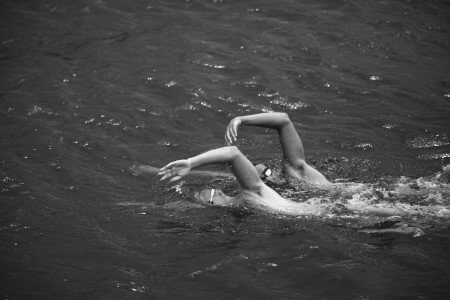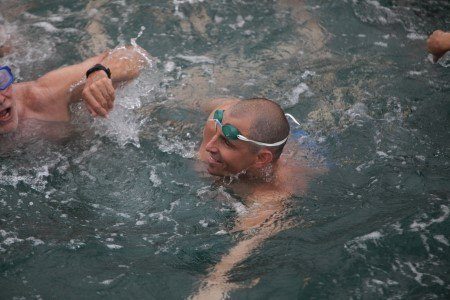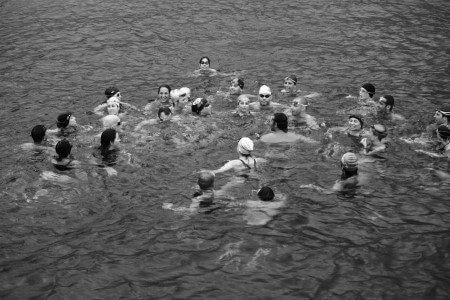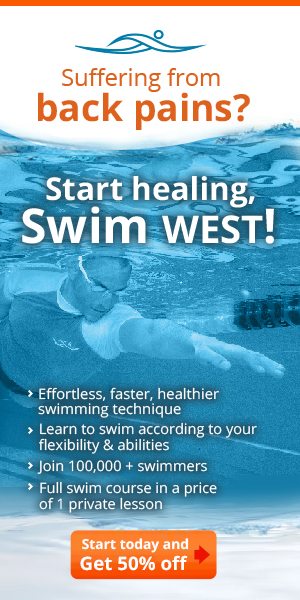Open water swimming? Is better to train indoor or outdoor?
Why is it hard to swim open water? What type of training will help me best?
In open water many swimmers have hard time breathing. Some swallow water, or experience hard time getting through the waves. It causes panic in many cases. Others simply avoid the ocean for those reasons, which is a shame.
Instead of learning the right swimming technique, or learning how to swim correctly swimmers tend to want that every thing would happen here and now!!
20 years ago, when I started coaching, we used to throw the children in the water. We had to sit aside and let the 6 years old kids survive on its own in the water. They swallowed water, but made it through 3-4 meters somehow.
That method of teaching was acceptable 20 years ago. Today I think it’s a very traumatic way of learning swimming. Never the less, 25% of those children came back to me 2 years later, having a water phobia. It is true that most of the kids made it on their own when thrown in the water, but why would anyone want to put them, and their parents through such a traumatic experience?

It is clear these days that teaching swimming should be done in steps. The same applies to open water swimming:
- Knowing how to swim indoor- including stroke count, gliding, heart rate control, distance swimming, going 40 laps with no break (freestyle preferred, but not necessitated).
- Learning the upright head technique- as to breathing every 3 strokes to both sides (to keep it symmetrical) and gliding. Also, being able to breath to only one side for racing purposes, such as breathing to the opposite side of the waves.
- Learning open water swimming in optimal conditions- and by that we mean swimming open water in a quiet, non-wavy, ocean. Practice the steps of getting in the water and dolphin jumps. It is important at this step you swim indoor swimming outdoor. Confused? Don’t be. We mean that you should swim in the ocean exactly the way you swim in the pool, and not with your head out (since it limits your range of motion, puts tension on your neck and slows you down).
- Practicing getting through the waves- in and out.
- It all must be done with an experienced coach! You should get to a point where you can swim with your eyes closed right through the waves, feeling when they are about to come, and just before they do put your arm a bit deeper and dive, just like the ‘butterfly arm’ drill (drill #7). But don’t dive to deep, so you can go right up and keep on swimming.
As a water trauma therapist, experienced swimming coach and a triathlon coach, I can tell you there is no rush to get in the ocean. The ocean is powerful and energetic, with turbulence and strong flows. It can be very dangerous, but at the same time can give such a great strength when swimming with it.
There are swimmers who only train indoor, but can perform amazing outdoor. It is way more important to know how to swim correctly indoor, which is the optimal condition, and feel comfortable with it: knowing how to balance your body in the water, swimming every 3 strokes and dragging your legs. Only then one should try and go open water swimming, enjoy the ocean and take the good side of it.
Today, about 90% of the people who come in ‘Water World’ stating they want to get better at open water swimming, need to understand it is not about swimming outdoor, but it is all about improving their technique. Once the technique is established, swimming outdoor will come along easily. Of course it doesn’t mean we don’t have to train outdoor as well, because we must certainly do.
When racing open water, it is important to train outdoor, so you can get used to the temperature, to the suit and most importantly- to the ocean. It means knowing what it feels like to swim with the waves and not against them.
All you have left now is mastering the right technique and jump in the amazing ocean
If you do want to work on your swimming technique fill in the questionnaire and an on-line WEST swimming program will be send to you (according to your flexibility and swimming level) https://swim-west.com/diagnosis/
The writer of this article is Ori Sela founder of WEST swimming technique and the owner of Water World Israel – one of the biggest and most professional clubs for Hydrotherapy in the world.




